Origin:
The American Volunteer Group was largely the creation of Claire L. Chennault, a retired U.S. Army Air Corps officer who had worked in China since August 1937, first as military aviation advisory to Generalissimo Chiang Kai-shek in the early months of the Sino-Japanese War, then as director of a Chinese Air Force flight school centered in Kunming. Meanwhile, the Soviet Union supplied fighter and bomber squadrons to China, but these units were mostly withdrawn by the summer of 1940. Chiang then asked for American combat aircraft and pilots, sending Chennault to Washington as adviser to China's ambassador and Chiang's brother-in-law, T. V. Soong. Since the U.S. was not at war, the "Special Air Unit" could not be organized overtly, but the request was approved by President Franklin D. Roosevelt himself. The resulting clandestine operation was organized in large part by Lauchlin Currie, a young economist in the White House, and by Roosevelt intimate Thomas G. Corcoran. (Currie's assistant was John King Fairbank, who later became America's preeminent Asian scholar.) Financing was handled by China Defense Supplies – primarily Tommy Corcoran's creation – with money loaned by the U.S. government. Purchases were then made by the Chinese under the "Cash and Carry" provision of the Neutrality Act of 1939.[1] Previously in the 1930s, a number of American pilots including Annapolis graduate Frank Tinker had flown combat during the Spanish Civil War, engaging Nazis and fascist Italians. Members were organized into the Yankee Squadron.
The 1st American Volunteer Group (AVG) of the Chinese Air Force in 1941–1942, nicknamed the Flying Tigers, comprised pilots from the United States Army Air Corps, Navy, and Marine Corps. The shark-faced nose art of the Flying Tigers remains among the most recognizable image of any individual combat aircraft or combat unit of World War II.
The American Volunteer Group was largely the creation of Claire L. Chennault, a retired U.S. Army Air Corps officer who had worked in China since August 1937, first as military aviation advisory to Generalissimo Chiang Kai-shek in the early months of the Sino-Japanese War, then as director of a Chinese Air Force flight school centered in Kunming. Meanwhile, the Soviet Union supplied fighter and bomber squadrons to China, but these units were mostly withdrawn by the summer of 1940. Chiang then asked for American combat aircraft and pilots, sending Chennault to Washington as adviser to China's ambassador and Chiang's brother-in-law, T. V. Soong. Since the U.S. was not at war, the "Special Air Unit" could not be organized overtly, but the request was approved by President Franklin D. Roosevelt himself. The resulting clandestine operation was organized in large part by Lauchlin Currie, a young economist in the White House, and by Roosevelt intimate Thomas G. Corcoran. (Currie's assistant was John King Fairbank, who later became America's preeminent Asian scholar.) Financing was handled by China Defense Supplies – primarily Tommy Corcoran's creation – with money loaned by the U.S. government. Purchases were then made by the Chinese under the "Cash and Carry" provision of the Neutrality Act of 1939.[1] Previously in the 1930s, a number of American pilots including Annapolis graduate Frank Tinker had flown combat during the Spanish Civil War, engaging Nazis and fascist Italians. Members were organized into the Yankee Squadron.
Flying Tigers – P-40 Tomahawk – Amazing WWII Color Pictures
The 1st American Volunteer Group (AVG) of the Chinese Air Force in 1941–1942, nicknamed the Flying Tigers, comprised pilots from the United States Army Air Corps, Navy, and Marine Corps. The shark-faced nose art of the Flying Tigers remains among the most recognizable image of any individual combat aircraft or combat unit of World War II.
The group comprised of three fighter squadrons of around thirty aircraft each. It trained in Burma before the American entry into World War II with the mission of defending China against Japanese forces. The group of volunteers were officially members of the Chinese Air Force.
The group first saw first combat on 20 December 1941, twelve days after Pearl Harbor. It demonstrated innovative tactical victories when the news in the U.S. was filled with little more than stories of defeat at the hands of the Japanese forces.
They achieved such notable success during the lowest period of the war for both the U.S. and the Allied Forces as to give hope to America that it might eventually defeat the Japanese. AVG pilots earned official credit, and received combat bonuses, for destroying 296 enemy aircraft, while losing only fourteen pilots in combat.
On 4 July 1942 the AVG was disbanded. It was replaced by the 23rd Fighter Group of the United States Army Air Forces, which was later absorbed into the U.S. Fourteenth Air Force with General Chennault as commander. The 23rd FG went on to achieve similar combat success, while retaining the nose art on the left-over P-40s.
Jack D. Canary Special Collection Photo
Jack Canary was a Tech Rep with North American Aviation in China during World War Two. After the War, he continued to work with NAA and also built and restored aircraft. He worked as a consultant on the film “Tora, Tora, Tora” and was killed while flying a PT-22 for the film in 1968. [via]
R.T. Smith next to the Disney “Flying Tiger” decal on the side of P-40 Tomahawk #40 in Kunming, China on May 23, 1942. [via]
R.T. Smith next to Chuck Older’s P-40 Tomahawk #68 in Kunming, China on May 23, 1942. [via]
R.T. Smith in the cockpit of P-40 Tomahawk #40 in Kunming, China on May 23, 1942. [via]
The photograph P-40 Tomahawk #49 flown by Tom Hayward of the Third Pursuit Squadron — Hell’s Angels — of the American Volunteer Group was probably taken from aircraft #47 on May 28, 1942 near the Salween River Gorge on the China-Burma border. [via]
Chuck Older and R.T. Smith after being decorated with the Fifth Class Order of the Cloud and Banner and the Star-Wing Metal in front of a P-40 Tomahawk at Yunnanyi, China. The photograph was taken on June 6, 1942. [via]
The photograph of the Third Pursuit Squadron — Hell’s Angels — of the American Volunteer Group was probably taken from aircraft #47 on May 28, 1942 near the Salween River Gorge on the China-Burma border. The shot of P-40 Tomahawks includes #68 flown by Arvid Olson, #46 flown by Bob Prescott, and #24 flown by Ken Jernstedt. [via]
The photograph P-40 Tomahawk #47 flown by R.T. Smith of the Third Pursuit Squadron — Hell’s Angels — of the American Volunteer Group was probably taken on May 28, 1942 near the Salween River Gorge on the China-Burma border. [via]
AVG Third Squadron P-40 Tomahawks #75, #96, #47, #22 and #35 parked at Kunming in May 1942.
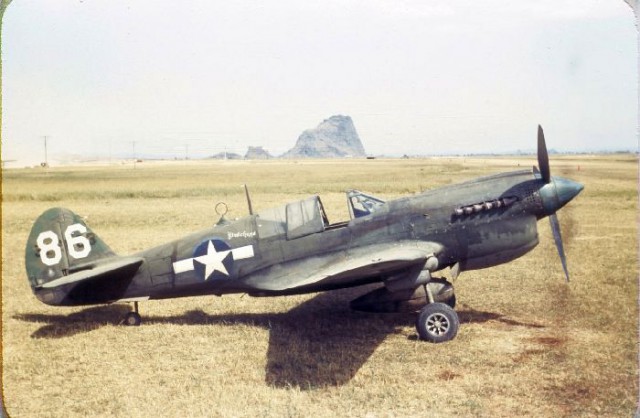
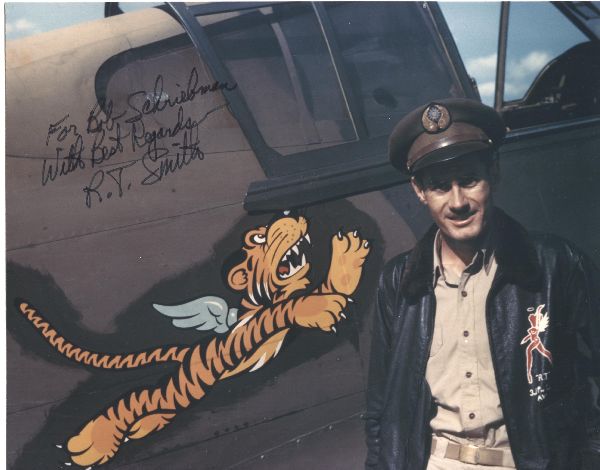
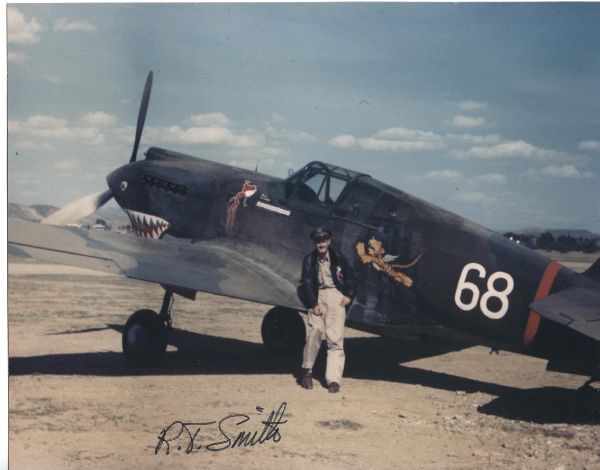
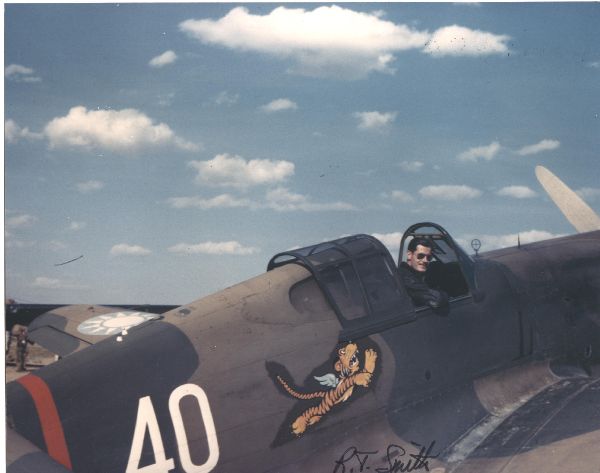
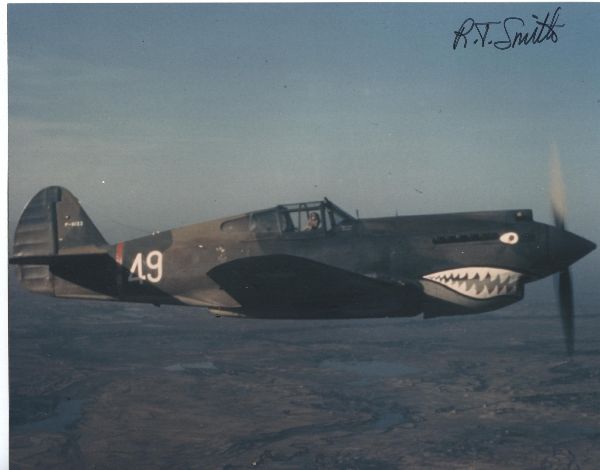
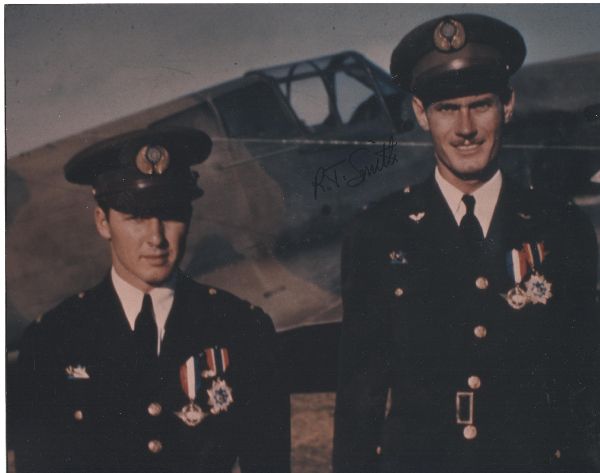
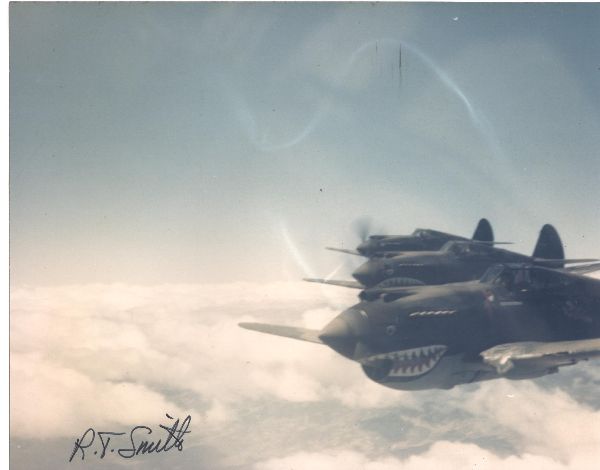
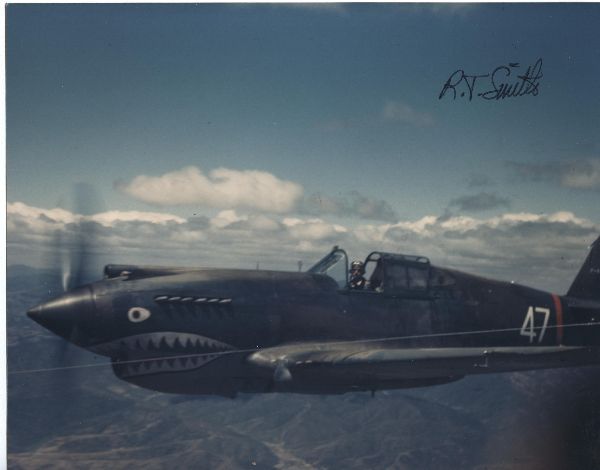
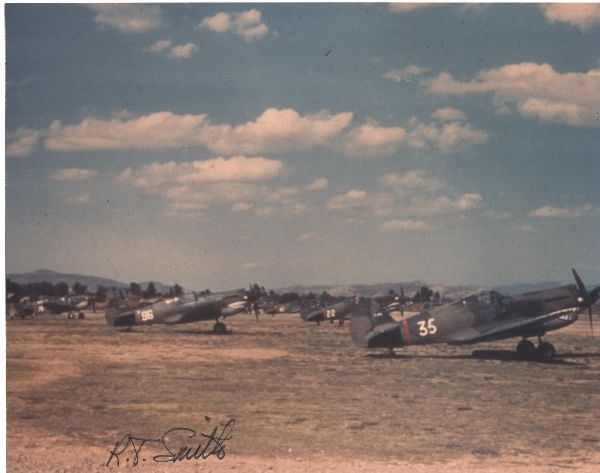
No comments:
Post a Comment